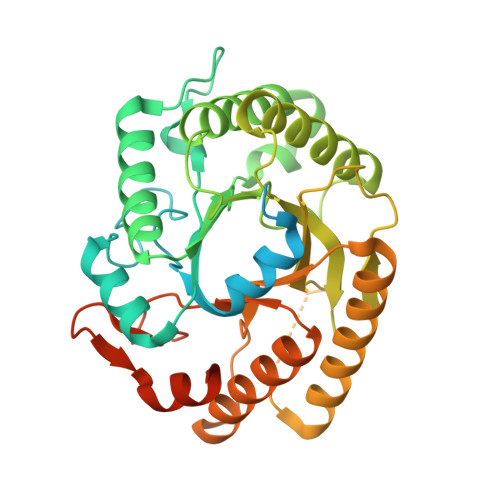Biochemical Characterization and Structural Analysis of a Bifunctional Cellulase/Xylanase from Clostridium thermocellum
Yuan, S.F., Wu, T.H., Lee, H.L., Hsieh, H.Y., Lin, W.L., Yang, B., Chang, C.K., Li, Q., Gao, J., Huang, C.H., Ho, M.C., Guo, R.T., Liang, P.H.(2015) J Biol Chem 290: 5739-5748
- PubMed: 25575592
- DOI: https://doi.org/10.1074/jbc.M114.604454
- Primary Citation of Related Structures:
4U3A, 4U5I, 4U5K - PubMed Abstract:
We expressed an active form of CtCel5E (a bifunctional cellulase/xylanase from Clostridium thermocellum), performed biochemical characterization, and determined its apo- and ligand-bound crystal structures. From the structures, Asn-93, His-168, His-169, Asn-208, Trp-347, and Asn-349 were shown to provide hydrogen-bonding/hydrophobic interactions with both ligands. Compared with the structures of TmCel5A, a bifunctional cellulase/mannanase homolog from Thermotoga maritima, a flexible loop region in CtCel5E is the key for discriminating substrates. Moreover, site-directed mutagenesis data confirmed that His-168 is essential for xylanase activity, and His-169 is more important for xylanase activity, whereas Asn-93, Asn-208, Tyr-270, Trp-347, and Asn-349 are critical for both activities. In contrast, F267A improves enzyme activities.
Organizational Affiliation:
the Institute of Biochemical Sciences, and.














